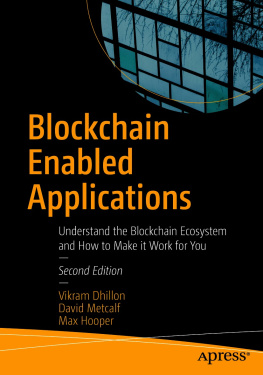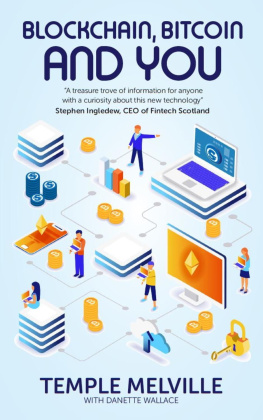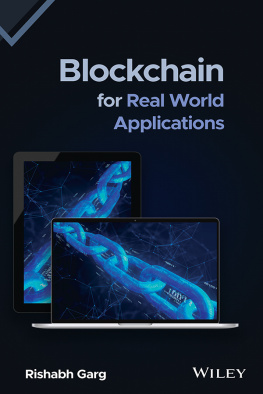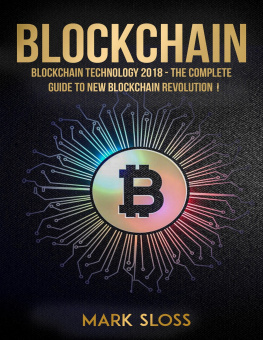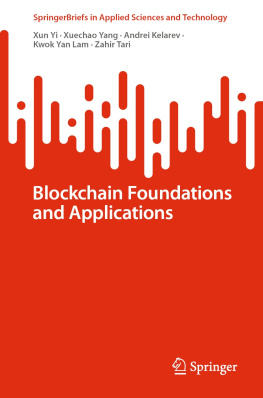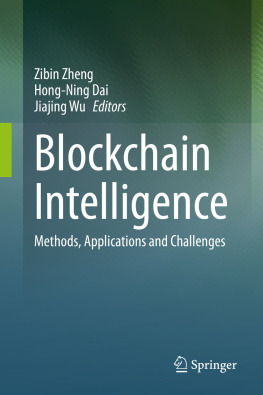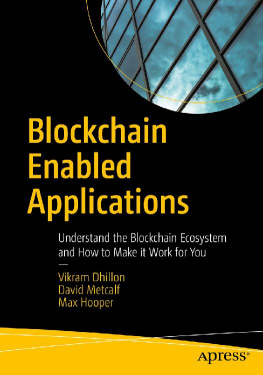Vikram Dhillon , David Metcalf and Max Hooper
Blockchain Enabled Applications
Understand the Blockchain Ecosystem and How to Make it Work for You
2nd ed.

Logo of the publisher
Vikram Dhillon
Orlando, FL, USA
David Metcalf
Orlando, FL, USA
Max Hooper
Orlando, FL, USA
Any source code or other supplementary material referenced by the author in this book is available to readers on GitHub via the books product page, located at www.apress.com/978-1-4842-6533-8 . For more detailed information, please visit http://www.apress.com/source-code .
ISBN 978-1-4842-6533-8 e-ISBN 978-1-4842-6534-5
https://doi.org/10.1007/978-1-4842-6534-5
Vikram Dhillon, David Metcalf, and Max Hooper 2021
Standard Apress
Trademarked names, logos, and images may appear in this book. Rather than use a trademark symbol with every occurrence of a trademarked name, logo, or image we use the names, logos, and images only in an editorial fashion and to the benefit of the trademark owner, with no intention of infringement of the trademark. The use in this publication of trade names, trademarks, service marks, and similar terms, even if they are not identified as such, is not to be taken as an expression of opinion as to whether or not they are subject to proprietary rights.
The publisher, the authors and the editors are safe to assume that the advice and information in this book are believed to be true and accurate at the date of publication. Neither the publisher nor the authors or the editors give a warranty, express or implied, with respect to the material contained herein or for any errors or omissions that may have been made. The publisher remains neutral with regard to jurisdictional claims in published maps and institutional affiliations.
Distributed to the book trade worldwide by Springer Science+Business Media LLC, 1 New York Plaza, Suite 4600, New York, NY 10004. Phone 1-800-SPRINGER, fax (201) 348-4505, email orders-ny@springer-sbm.com, or visit www.springeronline.com. Apress Media, LLC is a California LLC and the sole member (owner) is Springer Science+Business Media Finance Inc (SSBM Finance Inc). SSBM Finance Inc is a Delaware corporation.
Vikram Dhillon would like to dedicate this work to Aaron Hillel Swartz and his legacy.
David Metcalf would like to thank Katy, Adam, and Andrew for their patience during the extended hours and effort required while putting the book together, and the colleagues and students at UCF and through the NSF I-Corps program who identified the power of Bitcoin and blockchain technology years ago and shared their knowledge and future strategies that inspired us early on to pursue this area of research. Thank you to my co-authors and our outside collaborators and contributors, and of course to God for the wisdom, ability, and grit needed to bring this effort to life.
Max Hooper would like to thank his co-authors and colleagues at UCF/METIL Lab, along with special thanks to Mindy Hooper for her help and support. Additionally, he thanks God for his inspiration, guidance, direction, and wisdom. He would like to acknowledge His leadership.
Introduction
Blockchain technology is poised to fundamentally change our online world. Bitcoin was the first implementation of the blockchain; however, it has ushered in a fundamental shift for the offline world by allowing the transfer of value across the World Wide Web without the need for a centralized authority. Digitization and democratization of trust via the blockchain is enabling a new class of applications and companies to grow. Marc Andreessen famously authored a piece in the Wall Street Journal describing the theme of software eating the world, where numerous industries are undergoing a rapid transformation after being consumed by software. To that end, we hope that our book provides an outlook to the world as blockchain actively transforms enterprises and creates entirely new verticals.
The fundamental shift that blockchain technology represents is a method for moving away from having a central trusted authority in a massively distributed network. Instead, it allows for having multiple sources of trust that must all agree, based on an algorithm, that this transaction can be trusted as valid. Furthermore, most blockchain solutions offer an immutable and enduring record of a transaction that is hard for any source, trusted or not, to change or modify. This presents a completely new level of security, privacy, and trust to our online world. As you will see throughout this book, a variety of uses, protocols, and standards make up the current blockchain ecosystem.
We also strive to strike the perfect balance between being a technical reference and a how-to handbook that shows practical examples of both current- and future-state use cases. While not comprehensive, we do select several high-promise areas where blockchain technology is beginning to enable applications for entirely new industry segments. We hope this book will inform you and provide a roadmap to your success in leveraging blockchain technology to enable new applications for your business.
Throughout the book, you will see many examples of applications to reinforce key points. Early examples extend beyond financial transactions to cover other aspects of FinTech, RegTech (regulation), InsuranceTech, GovTech (eVoting, licensing, records, and certification), HealthTech, and many others.
In order to understand these early examples, it is necessary to explore blockchains history; fundamentals of distributed trust; consensus; hardware; software; and encryption in the early chapters. Next, youll learn about the network transactions and simplified payments in blockchain fundamentals. Well compare this with the extended capabilities of Ethereum and specific characteristics like how gas works and DApps, along with examples of Blockchain-as-a-Service. To further extend these capabilities, two chapters are devoted to DAO/Decentralized Organizations and the details and examples in these areas. In Chapter are interviews with prominent figures from the blockchain world discussing the transforming roles of blockchain in education, artificial intelligence, machine learning, and quantum simulations.
Presently, during the COVID-19 pandemic, blockchain-based applications are being repurposed to help with contract tracing, developing health passports for the general public, and tracking physician burnout. In the near future, supply-chain applications built on the blockchain could assist in maintaining personal protective equipment (PPE) inventory and even therapeutics such as vaccines. We hope you find the information in this book useful as well as enjoyable as you explore the fundamentals, current best practices, and future potential of blockchain-enabled applications. We welcome your feedback at info@metil.org .
Acknowledgments
The authors would like to acknowledge our editors, Shrikant Vishwakarma and Spandana Chatterjee, for their help and guidance throughout the writing process.
The figures throughout this book were made with the help of Lucidchart. All figures from external sources were used with permission.

